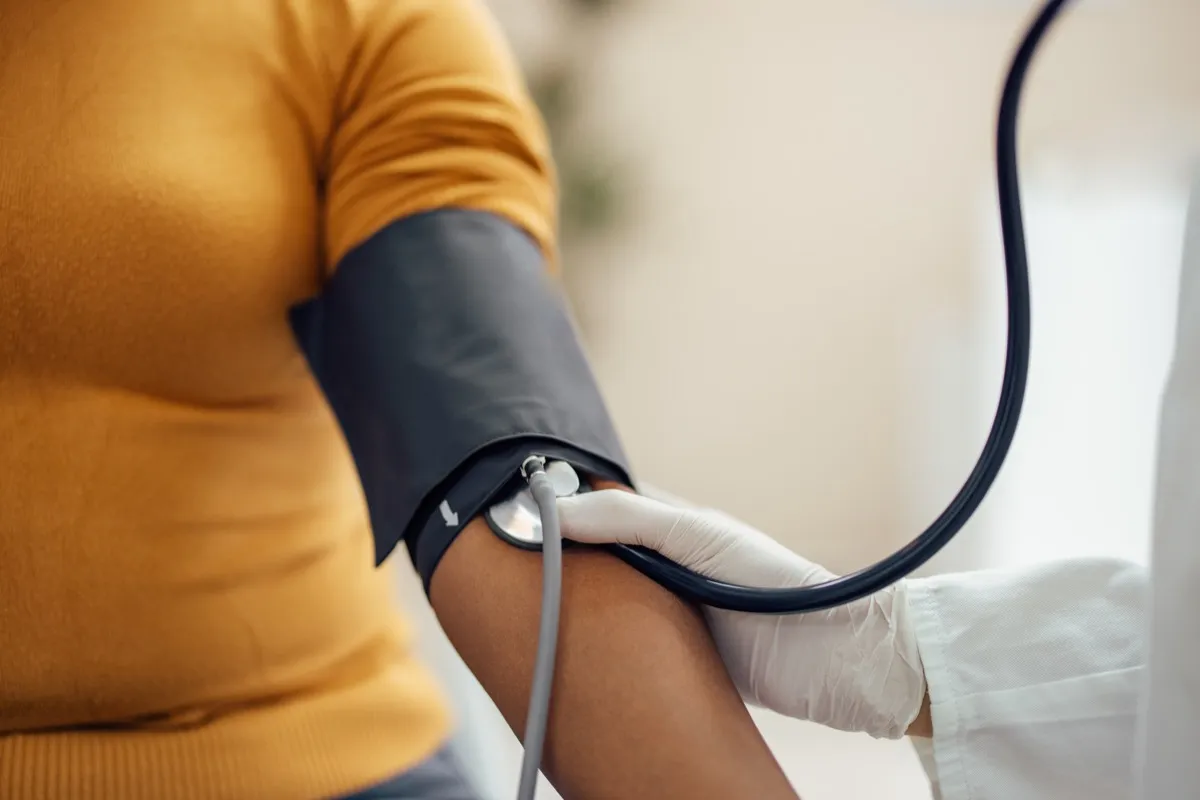Potassium is an essential mineral used in every cell and tissue in your body. That’s why hypokalemia, or potassium deficiency, can cause a wide variety of symptoms.
“Potassium is an important ion involved in the transmission of nerve signals, muscle contractions, fluid balance and blood pressure, to name a few,” explains Lauren DeDeckerMD, internal medicine physician and creator of popular medical content.
Since potassium is an essential part of regulating muscle contractions, and the heart is a muscle, one of the most important functions of this mineral is to maintain the regularity of our heartbeat. It is also responsible for moving nutrients through your cells and removing cellular waste, thus playing an important role in metabolic function.
Doctors say you can usually get all the potassium you need through food. However, if you think your levels are outside of a normal range, it is important to discuss this with a healthcare professional.
Wondering what symptoms might signal a problem and start that conversation? Read on to learn the top five symptoms of potassium deficiency and how low levels could affect your health.
RELATED: 5 Symptoms of Fiber Deficiency, Doctors Say
Who is most at risk of potassium deficiency?


DeDecker notes that true potassium deficiency is “not common in healthy, asymptomatic adults.”
However, Chris MohrPhD, RD, fitness and nutrition consultant at Fortune Recommends Health, says potassium deficiencies can occur “if you don’t eat enough potassium-rich foods or if you lose too much potassium through urine, sweat or digestive issues.”
“People with kidney disease, those taking certain diuretics, or those with eating disorders are at higher risk,” he notes.
High alcohol consumption can also negatively affect your potassium levels, says Olalekan OtulanaMBCHB, UK-based GP and addiction specialist currently working with Ocean Recovery Centre.
“We frequently encounter and manage potassium deficiencies in our patients, with one of the main contributing factors being excessive alcohol consumption,” says Otulana Better life.
In fact, a 2022 study published in the Journal of Clinical Medicine wrote that “hypokalemia occurs in nearly 50% of patients with chronic alcohol use disorders.”
This may be due to increased vomiting, dehydration, and poor diet. It also makes your kidneys work hard to move alcohol through your system, leading to a loss of electrolytes, including potassium.
RELATED: Folate Deficiency: 5 Signs You’re Not Getting Enough Vitamin B9.
6 Symptoms of Potassium Deficiency
The only way to know for sure that you have a potassium deficiency is to have a blood test; this is part of a basic metabolic panel (BMP).
In addition to potassium, this test measures seven other substances in your blood: glucose, calcium, sodium, carbon dioxide, chloride, creatinine, and blood urea nitrogen.
However, knowing the symptoms of potassium deficiency can help you spot a problem and start a conversation with your doctor. These are the five main symptoms to look out for.
1. Fatigue


Low potassium levels are often associated with fatigue because they can affect how your body processes and uses nutrients. However, it’s important to note that fatigue is a nonspecific symptom of hypokalemia, which means it can have a very wide range of other possible underlying causes. Your doctor can help you determine the root cause.
2. Muscle weakness and cramps


DeDecker tells Better life This muscle weakness is another possible sign of a potassium deficiency, because without adequate intake, your nerves and muscles cannot function at their optimal levels. In severe cases of potassium deficiency, patients may experience muscle cramps.
3. Cardiac arrhythmia


Cardiac arrhythmia, or an irregular heartbeat, can also be a sign of potassium deficiency. DeDecker stresses that this can be dangerous, so it’s important to talk to your doctor if you notice this symptom.
“If left untreated, arrhythmias can damage the heart, brain or other organs. This can lead to a potentially fatal stroke, heart failure, or cardiac arrest,” emphasizes the National Institutes of Health (NIH).
One of the reasons why it is crucial to seek professional advice rather than trying to treat this symptom at home with potassium supplements is that “excessively high levels of potassium in the blood can also be dangerous and cause cardiac arrhythmias,” says DeDecker.
In other words, you could have the same symptom whether your potassium levels are high or low, and you can make the problem worse by trying to correct it without a doctor’s supervision.
4. Constipation and bloating


Digestive problems such as constipation and bloating are lesser known symptoms of potassium deficiency. According to Otulana, this happens because “potassium promotes the function of smooth muscles in the digestive tract, and low levels can slow intestinal transit.”
5. Numbness and tingling


Otulana explains that some people with low potassium levels may also notice numbness or tingling, particularly in the hands and feet, because “nerve function can be affected by low potassium.”
When this happens, it’s called peripheral neuropathy. Although the condition is often caused by factors unrelated to an underlying disease, it’s worth discussing with your doctor.
6. Breathing difficulties


Low potassium levels can also affect breathing by preventing the lungs from contracting properly. “In severe cases, muscle weakness due to low potassium levels can affect the muscles used for breathing,” says Otulana.
If you notice persistent shortness of breath for any reason, it is important to seek medical attention immediately.
7. Hypertension


Mohr notes that a potassium deficiency can put you at increased risk for hypertension.
“Low potassium can raise blood pressure, especially because overconsumption of sodium is common and sodium and potassium work together like a seesaw,” he explains.
When you eat too much sodium and not enough potassium, these two electrolytes that typically help your body maintain fluid and blood volume become out of balance. Limiting your sodium intake and increasing your potassium intake are two ways to help lower your blood pressure.
Can you eat too much potassium?


According to the United States Department of Agriculture (USDA), “4,700 milligrams (mg) is the recommended daily intake of potassium for people ages 14 and older. But this group gets only about half that.”
“Because the richest sources are fruits and vegetables and most people do not meet the minimum recommendations, potassium is considered a ‘deficiency’ nutrient for which most do not meet the recommendations,” says Mohr .
That said, lower levels are considered adequate intake (AI) by the NIH, meaning they ensure nutritional adequacy even if they don’t reach ideal levels. Most adult men get adequate intake when they consume 3,400 mg of potassium per day, and most adult women get adequate intake when they consume 2,600 mg of the mineral per day. Your exact needs may vary based on age, gender, and overall health.
DeDecker notes that more isn’t always better: You may experience side effects from potassium levels that are too low or too high, especially if you have certain chronic conditions.
“The kidneys help maintain potassium balance. People with advanced kidney disease may be asked to limit their potassium intake to avoid excessive blood levels,” she gives as an example.
Food sources of potassium


Typically, when people think of food sources of potassium, they think of bananas in particular. However, there are many other plant-based sources of potassium to explore. These include apricots, avocados, apples, oranges, spinach, kale, tomatoes, cucumbers, zucchini, eggplant, pumpkin, carrots, sweet potatoes, potatoes, and lentils, DeDecker says.
Meat, fish, and dairy products also provide potassium in varying degrees. For example, according to the USDA Dietary Guidelines, a standard three-ounce serving of salmon can contain up to 535 mg of potassium, while an eight-ounce serving of plain nonfat yogurt typically contains 625 mg of the mineral.